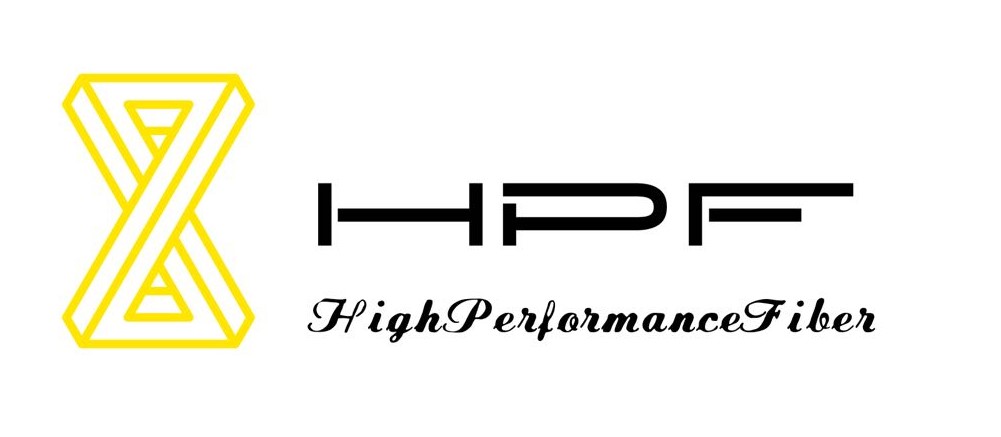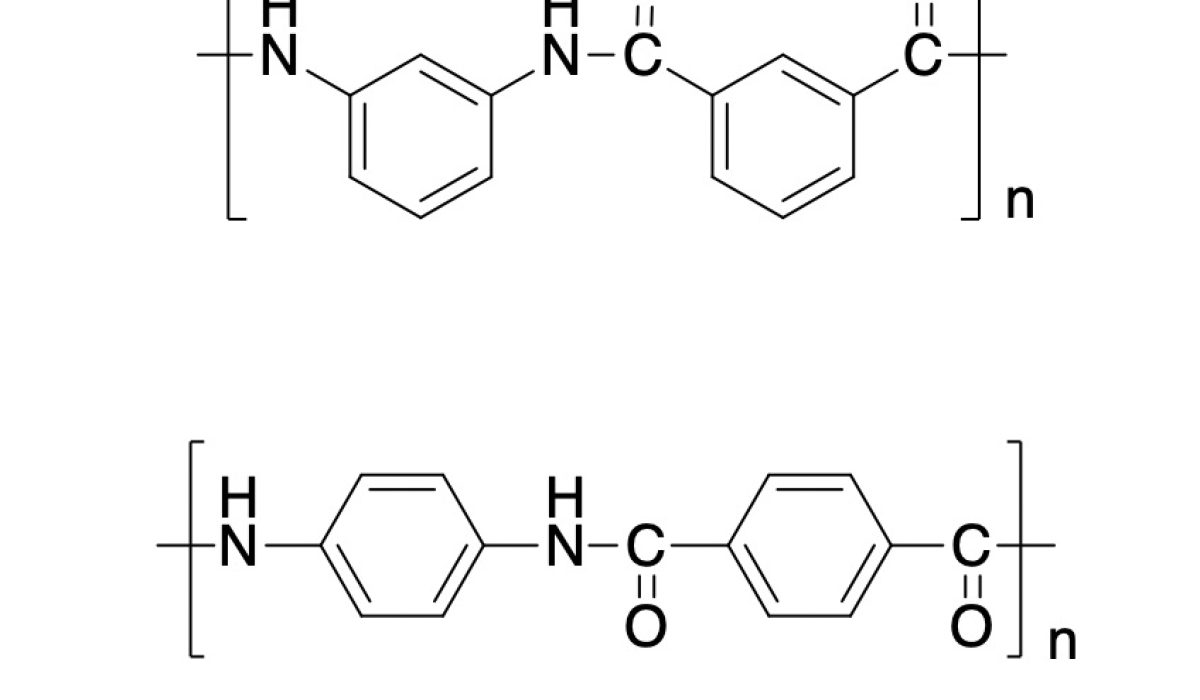3.1.2 Surface modification dyeing
When polyphosphoric acid is used to treat meta-aramid, the surface of the fiber is etched, the oxygen-containing groups increase, the activity is enhanced, and the structure remains unchanged; the fiber swells, there is no damage to the crystal structure, the crystallinity is slightly reduced, and the thermal properties remain unchanged. Then the self-made carrier EA-1 was used to dye the modified meta-aramid fiber with cationic dyes. The dye uptake rate and apparent color yield of the fabric were significantly improved, and the ability of the meta-aramid fiber to adsorb dyes was improved.
Wang Jiye and others used desizing enzyme to pre-dye meta-aramid fabrics. Compared with the sodium hydroxide treatment process, the use of desizing enzyme can improve the color fastness and dyeing effect of meta-aramid fabrics after dyeing, and The fabric is less damaged by strong force and is suitable for the pre-dyeing process of meta-aramid fabrics.
Guo Yafei and others used ozone plasma to pretreat aramid fabrics. The surface of the aramid fibers became rough and a large number of active groups were introduced, but the fiber dyeing performance was not effectively improved. The dispersion of aramid fiber in the resin is greatly improved. The aramid fiber in the water-based resin is evenly distributed, and the bonding strength between the fiber and the resin is improved. Therefore, water-based resin is used to modify the pretreated aramid fabric, and then disperse dyes are used For dyeing, the dye uptake rate of aramid fabrics can reach 98.6%, and the color fastness to rubbing is 4 to 5 levels. However, after pretreatment, the fiber surface is etched, the fiber strength is greatly lost, and the flame retardant performance is reduced.
3.1.3 Solvent dyeing
Zhao Chuan and others dyed meta-aramid yarn by transporting carbon dioxide fluid under a supercritical state of 150°C and 45 MPa, using disperse dyes and self-made carriers. All color fastnesses of the yarn were above level 3 to 4. The line strength is slightly improved and the K/S value is greatly improved.
3.2 Dyeing of para-aramid fiber
Huo Qian and others used homemade auxiliary agent 50g/L to dye para-aramid fiber fabric at 140℃, with a liquor ratio of 1:20, using 4% (omf) cationic dye, adding 10g/LOP-10, 20g/ LNaNO3, pH value is 5, dyeing time is 60 minutes, the K/S value of para-aramid fabric is significantly improved, and the color fastness to soaping reaches level 4 to 5 or above.
He Chaowei and others used 30g/L chemical carrier additive A, dyed para-aramid with cationic dyes at a dyeing temperature of 140°C, pH 3-4, and kept it warm for 60 minutes to obtain the optimal K/S value. Among them, NaCl has little effect on the color depth value of para-aramid fiber after dyeing.
Lin Yanping used plasma to treat para-aramid fiber. The crystallinity of the fiber decreased, the amorphous area increased, the molecular structure did not change, the mechanical properties decreased slightly, the friction of the fiber increased, and the dyeing performance improved.
3.3 Printing of aramid fabrics
Liu Fan et al. synthesized amino silicone oil-modified acrylic with an average particle size of 91.79nm, surface tension of 29.47 mN/m, glass transition temperature of 10.5°C, water contact angle of 50°, and thermal decomposition temperature of 50% mass loss of 403.83°C. Ester adhesive has a gel rate of 2.52% and a conversion rate of 92.33%. Use 30% mass fraction of adhesive to perform pigment printing with good printing performance on aramid fabrics. The pattern color has a high apparent color depth value, bright color, saturated color, wet rubbing color fastness level 4, and dry rubbing color fastness level 4. The color fastness to rubbing is level 4 to 5, and the fabric feels soft.
The self-made new carrier was used as an accelerator for cationic dye printing of meta-aramid fabric (fabric weight 150g/m2). Traditional aramid dyeing carriers are mostly toxic or have pungent odors and are difficult to dissolve in water. When used for printing, the dye and slurry will separate and bleed, making the outline of the printed pattern blurred. Huo Qian and others used a new type of carrier. The self-made carrier that is fully miscible with water can not only improve the clarity of printed pattern outlines and print brightly colored patterns, but also has excellent deepening effects. Use sodium alginate paste and homemade carboxymethyl waxy corn starch paste in a ratio of 3:7 to obtain a dye printing paste, add 1% cationic dye, 2% homemade new carrier, 5% N-methyl Pyrrolidone, adjust the pH value to 5-6 to obtain printing paste. After printing on the spandex fabric, dry it at 80℃ for ten minutes, steam it at 110℃ for 20min, then wash it with cold water, hot water and add 2g/L soaping agent and 1g/L carbonic acid at 100℃. Soap with sodium for 5 minutes, then wash and dry. The color fastness to dry rubbing of printed fabrics is level 4, the color fastness to wet rubbing is level 3 to 4, and the color fastness to washing is level 4 or above.
Zhang Shuai et al. used a compound of sodium alginate and carboxymethyl waxy corn starch to obtain a printing paste. They added 2% disperse dye, 1% accelerator, 4% solubilizer, and 2% anti-dyeing salt S. At pH Print the aramid fabric under the conditions of 9. After printing, steam it for 20 minutes at 110 ℃. After printing, the pattern outline is clear, the fastness to sunlight is good, and the fastness to dry rubbing is good. , the color fastness to soaping is good, and the staining of cotton, nylon, acrylic, and wool is good, but the staining of acetate and polyester is poor, and the fastness to wet rubbing is poor.
4. Applications of aramid fiber
4.1 Metallization applications
Although aramid fiber is superior to metal fiber in many properties, its application in special fields such as aerospace cables, electromagnetic shielding, and supercapacitors is limited due to its strong insulating properties, that is, it is a poor conductor. Therefore, the metal fiber of aramid fiber is The study of chemical transformation has also been a hot topic of research and development in recent years. Metalized aramid fiber first activates and modifies the fiber surface to improve the wettability of the fiber surface, and then is immersed in a chemical plating solution (such as silver) to induce deposition and thereby metallize the fiber. It is also possible to successfully introduce silver nanoparticles onto the surface of the fiber by first degreasing the aramid fiber, then placing it in N-methylpyrrolidone (NMP) containing silver nitrate, and then performing ultrasonic swelling to achieve metallization of the aramid fiber.
4.2 Applications in sports
In the production of protective gear, sports equipment and some equipment used by athletes in sports, they need to be as light as possible, with low density, and at the same time ductile and durable. Aramid fiber can be used because of its light weight, excellent performance and appearance. Allow users to have a more comfortable sports experience and achieve better competitive results. For example, tennis and table tennis rackets made of rubber and wood can be replaced with aramid fiber and its composite materials to control the ball. The effect, rebound effect, racket strength, etc. have been greatly improved. Aramid fiber has high specific strength and specific modulus, and aramid fiber composite materials have the highest specific strength and medium specific modulus. Sports equipment using aramid fiber, sports with large impact force and fast speed (such as (skiing, racing) protective gear and equipment can protect the safety of athletes during training and competition. The damping and shock-absorbing effect of aramid fiber and its composite materials is better than that of metal materials. For sports equipment or equipment that requires damping properties, the use of aramid fiber can improve athletes’ competitive performance, such as adding aromatic fibers. The racket made of polyester fiber has better shock-absorbing and energy-absorbing effect than the ordinary racket made of carbon fiber material, and it also has better impact resistance. Aramid fiber has good wear resistance, high strength, extremely high stability, and is easy to process and shape. It can improve the safety and environmental protection of the material and is a material that can replace asbestos fiber.
4.3 Application of flexible stab-proof materials and bullet-proof materials
Flexible puncture-proof materials require skills to resist stretching and shearing, and the latter is more important. Flexible puncture-resistant materials based on aramid weft-free fabrics need to be orthogonally laminated using adhesives so that they can fully fix the fibers and prevent fiber slippage. At the same time, the cured adhesive can reduce the blade tip. penetration depth, but its colloidal modifiers reduce its softness. The aramid fibers of aramid nonwoven fabrics are irregularly arranged and have a denser structure and better puncture resistance against sharp objects. However, the internal structure of the fibers is relatively loose and the cohesion between the fibers is not good. Well, as a puncture-proof material alone, it is not very effective at preventing cuts. The structure of aramid woven fabric is relatively tightly interwoven, which can effectively prevent the penetration of knives. However, if the warp and weft yarns are cut, the sudden enlargement of the crack will greatly reduce the puncture resistance. Aramid knitted fabric is used as the base material of stab-proof material. When a knife is pierced, the slipping coils will drive the surrounding coils to slide and tighten, and the number of tightened coils will gradually increase, and the friction between the coils will gradually increase, which can effectively prevent The process of inserting the knife and tightening the coil will absorb energy. When the coil cannot be tightened, the knitted fabric “self-locks” to prevent stabbing. It was also found that the puncture resistance of rib tissue is better than that of weft stitch tissue, and the rib tissue placed on the top layer has the best puncture resistance.
Ai Qingsong and others used different aramid woven fabrics and weft-free fabrics, and used real target shooting tests to test the bullet-proof performance. They found that both aramid woven fabrics and aramid fiber weft-free fabrics can be bullet-proof, but the woven fabric has the first bullet-proof effect. It is better to use a ballistic structure composed of a plain weave woven fabric with an area density of 200g/m2 and a thickness of 0.3mm and four layers of aramid fiber weft-free fabric. The ballistic resistance best meets the NIJ IIIA standard, has good softness, and is suitable for comfortable wearing. body armor.
4.4 Aerospace applications
It is reported that the para-aramid “Technora” developed by Japan’s Teijin Company has been used in the parachute sling (for landing) and lifting device of the unmanned Mars probe in the United States. The 3233 resin aramid fiber fabric composite material studied by Wuyun Qiqige and others in China adopts a honeycomb sandwich structure and can directly form gel tumors with epoxy resin prepreg. Its mechanical properties meet the requirements of engineering materials and the glass transition of composite materials The temperature is 150℃, it has good flame retardancy and excellent dielectric properties, and has been used in aviation composite materials. Duan Lihui and others conducted a bird impact test on an aircraft tail made of aramid material, and found that after the impact, the front beam of the aramid sandwich leading edge configuration was not damaged, but the leading edge was dented, making it more resistant to bird impact; the aramid layer The front beam and front beam web of the plywood leading edge configuration are damaged, the leading edge is cracked, and the leading edge skin is greatly deformed, which increases the maintenance cost of the aircraft after a bird strike.
4.5 Other applications
In the application market of ordinary non-metallic optical cables, aramid 1414 uses high-strength and high-mode finely branched aramid fibers. It is the best choice in the field of optical fiber guidance where the outer diameter is only 0.32 mm ~ 0.40 mm. Aramid fiber can also be used to prepare aramid III fiber with ultra-high strength, which is used as a strong belt. Mao Chengdong studied the design and production process. In addition, due to its excellent corrosion resistance and chemical properties, aramid fiber can also be used as liquid-solid separation filter materials in filter materials in the form of aramid woven fabrics, non-woven materials, aramid nanofiber materials and composite materials. Gas-solid separation filter material is used. Airgel materials with aramid nanofibers with good mechanical strength, high specific surface area and low thermal conductivity can be used as high-end thermal sheets or fabrics
5. Prospects for Aramid Fibers
Aramid fiber has excellent performance and is one of the national key strategic materials. Although we have broken through many research bottlenecks, our current production technology capabilities are still far away from Teijin and DuPont. Therefore, there is still a need for the development of aramid fiber materials. More and more in-depth research. We can improve the research level of our aramid fiber by introducing technology and studying it. At the same time, we can improve the development of aramid fiber and deepen the research of aramid fiber through independent innovation and self-research.



